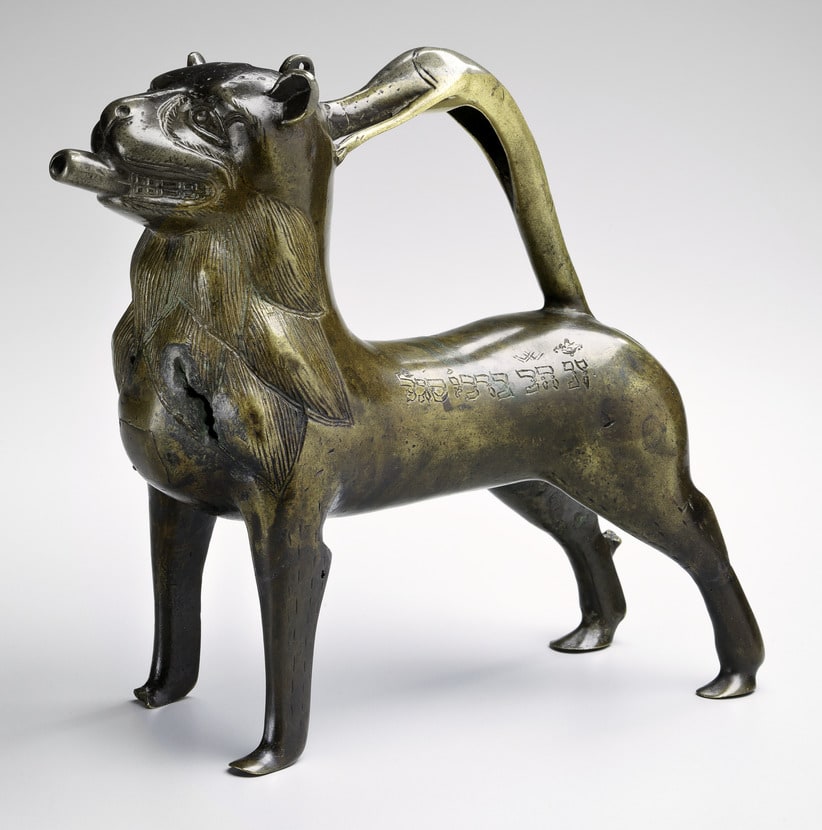
- Object Name:
- Aquamanile (Handwashing Vessel)
- Place Made:
- Northern Germany
- Date:
- late 12th century with later inscription
- Medium:
- Copper alloy: cast and engraved
- Dimensions:
- 9 1/2 × 10 7/8 × 4 1/4 in. (24.1 × 27.6 × 10.8 cm)
- Credit Line:
- Purchase: Gift of The Kagan-Katz-Kivel Families, by exchange; Traditional Judaica Acquisitions Committee and Endowment Interest Funds; Henry and Lucy Moses Fund; Henry Herzog Family and Friends Fund in memory of Ruth Herzog; Helen and Jack Cytryn Fund; and Traditional Judaica Acquisitions Fund
- Accession Number:
- 2013-16
On View
Made in northern Germany; most likely presented to a synagogue in Germany sometime after the mid-sixteenth century; the vessel’s history is shrouded in mystery from then until the 1970s, when it was purchased in London by a private collector from New York.
In the twelfth century fanciful pitchers in animal and human form came into use for handwashing rituals in European churches and synagogues, and for home use. This vessel in the form of a lion bears a Hebrew inscription, probably added several centuries later: “This is a donation of the honored Berekhiah Segal.” With these simple words, the ewer takes its place among those rare Jewish ceremonial works that have survived from the Middle Ages. The name Segal is an abbreviation for “Levitical assistant,” identifying the donor as a descendant of the family of Levi, responsible for aiding priests. It likely was used during the synagogue service, when Levites wash the hands of the descendants of ancient priests before they recite the priestly blessing.
In the twelfth century fanciful pitchers in animal and human form came into use for handwashing rituals in European churches and synagogues, and for home use. This vessel in the form of a lion bears a Hebrew inscription, probably added several centuries later: “This is a donation of the honored Berekhiah Segal.” With these simple words, the ewer takes its place among those rare Jewish ceremonial works that have survived from the Middle Ages. The name Segal is an abbreviation for “Levitical assistant,” identifying the donor as a descendant of the family of Levi, responsible for aiding priests. It likely was used during the synagogue service, when Levites wash the hands of the descendants of ancient priests before they recite the priestly blessing.
Information may change as a result of ongoing research.